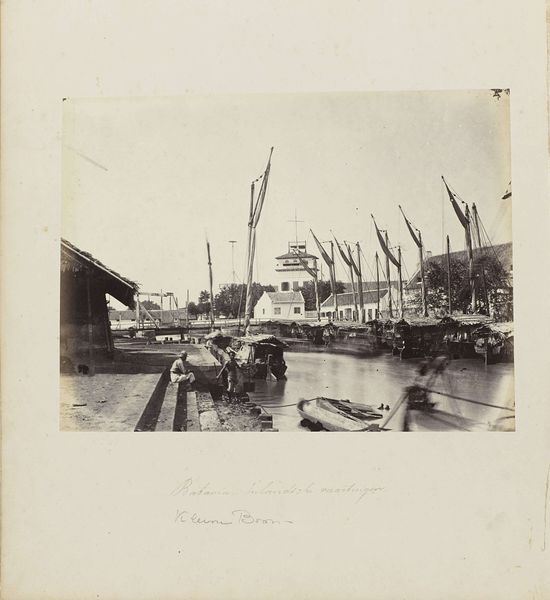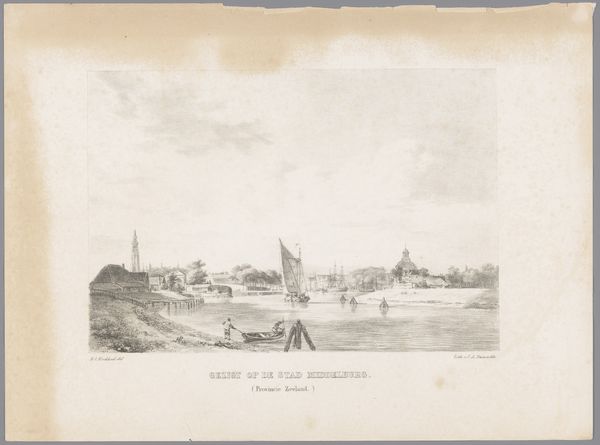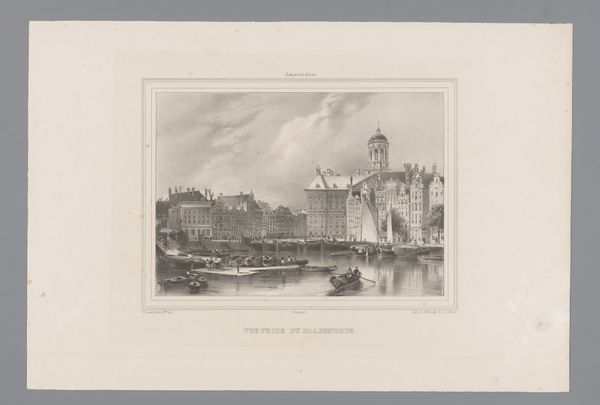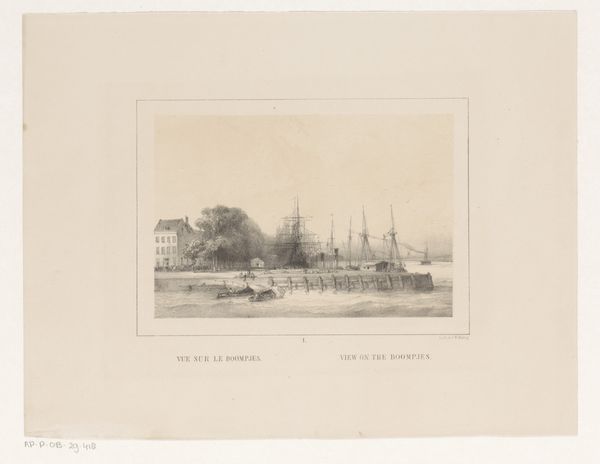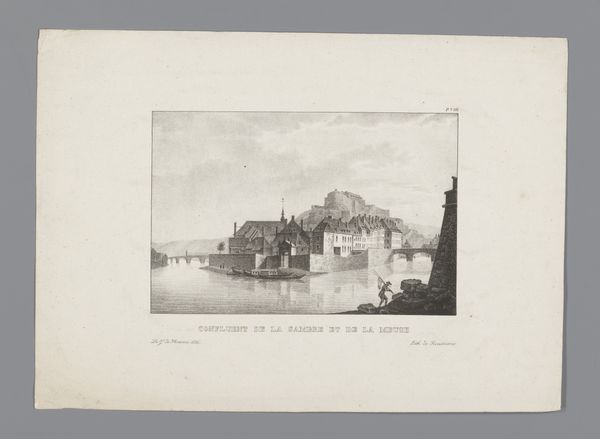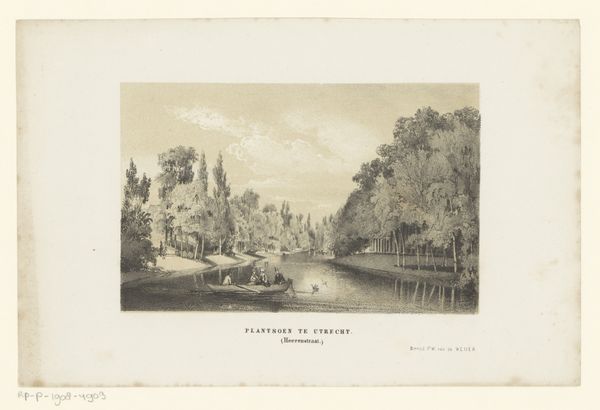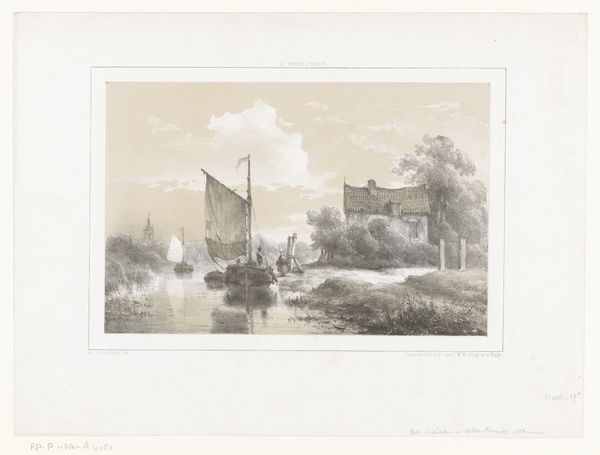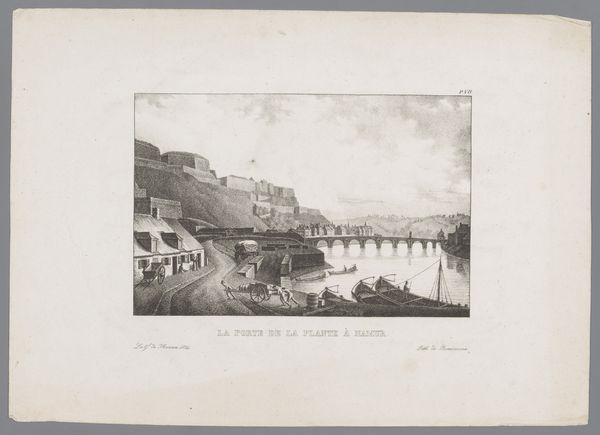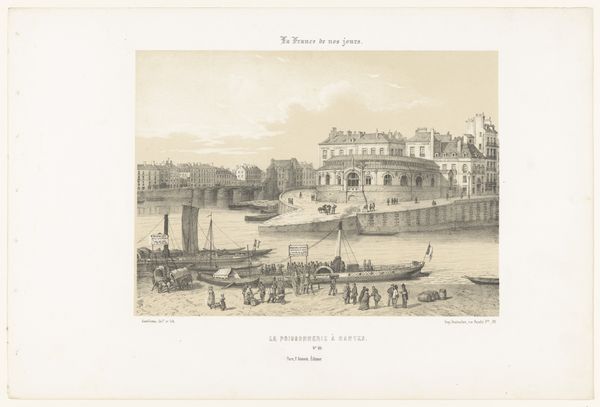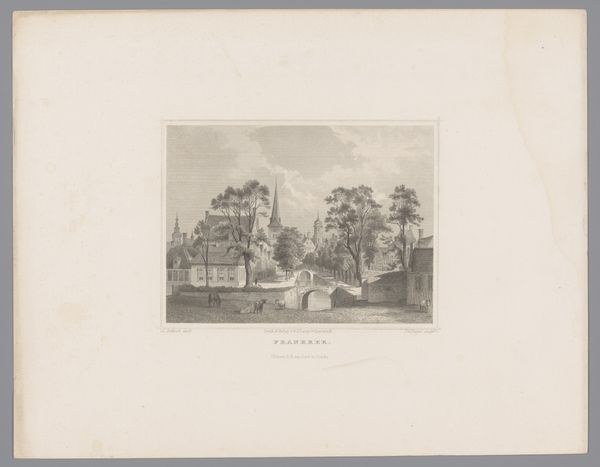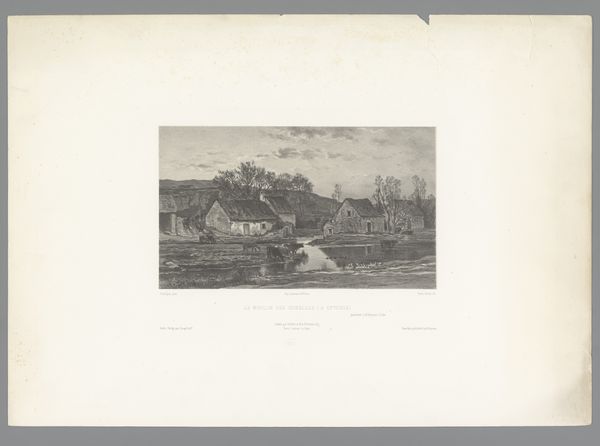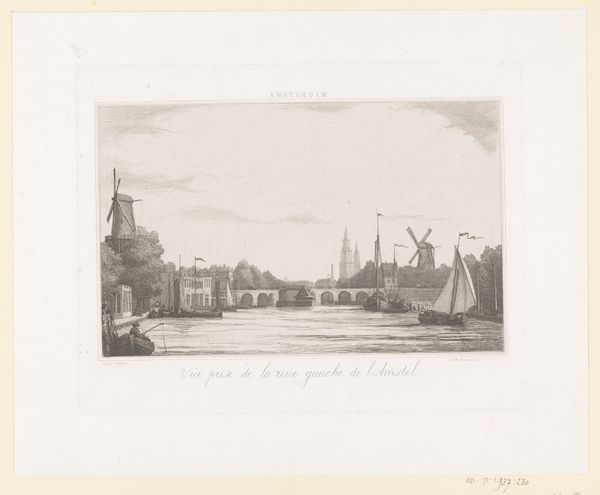
print, engraving
#
aged paper
#
light pencil work
#
dutch-golden-age
# print
#
old engraving style
#
landscape
#
cityscape
#
engraving
#
realism
#
monochrome
Dimensions: height 155 mm, width 240 mm
Copyright: Rijks Museum: Open Domain
Pieter Wilhelmus van de Weijer made this print of the Waard-Barrière in Utrecht. The city is reflected in the water. This seemingly serene view evokes a deeper consideration of urban development and social segregation in the 19th-century Netherlands. Back then, the urban landscape was being reshaped by industrialization and population growth, which led to the construction of barriers and boundaries, like the one depicted here. These barriers, while serving practical purposes such as controlling access and trade, also functioned as instruments of social division, reinforcing class distinctions and limiting the movement of marginalized communities. The calm surface of the water then belies the tensions that characterized the social fabric of the time. Looking at this image, we can think about how seemingly neutral urban planning decisions often have profound and lasting impacts on the lives and experiences of different groups within a society.
Comments
No comments
Be the first to comment and join the conversation on the ultimate creative platform.
